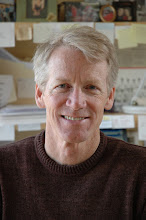 As most you reading this blog know, renewable energy is an integral part of the move to electric vehicles. Even though studies show that charging an EV from the existing grid is still much cleaner than driving a gas car, the goal is to run our cars on renewable electricity to the extent possible. One of the drawbacks to renewable energy is the intermittency of solar and wind. While this isn't much of a problem with solar since the peak demand for electricity closely follows solar production, it is a problem for wind. Wind is typically strongest at night when the grid has considerable excess capacity and prices are low.
As most you reading this blog know, renewable energy is an integral part of the move to electric vehicles. Even though studies show that charging an EV from the existing grid is still much cleaner than driving a gas car, the goal is to run our cars on renewable electricity to the extent possible. One of the drawbacks to renewable energy is the intermittency of solar and wind. While this isn't much of a problem with solar since the peak demand for electricity closely follows solar production, it is a problem for wind. Wind is typically strongest at night when the grid has considerable excess capacity and prices are low.Storing this low cost energy for the following day is therefore of great value to the utilities. Not only does it allow them to add to their portfolio of renewables, which they must do to meet ever more stringent environmental laws, but it can reduce the need to use expensive natural gas "peaker" plants.
Southern California Edison (SCE), the largest investor owned utility here in SoCal, has applied for a Department of Energy grant to utilize a massive battery storage unit supplied by MIT start up, A123 Systems, in an 8,000 sq ft building in the Tehachapi region of California. SCE intends to have as much as 4,500 megawatts of wind energy in this region by 2015. Plug-in vehicles will be charging mostly at night and will therefore constitute an ever growing market for this energy, but the numbers will be small for some time to come. It's necessary to store as much of this energy as possible so that we don't end up with the same problem they have in Texas and other states with their prodigious wind farms generating so many kiloWatt hours that the market can't absorb them and the price drops to zero. With daytime costs of kWh reaching into the 30-40 cent range, it make sense to store this clean energy for use during times of peak load.
See the whole story here: http://www.reuters.com/article/GCA-GreenBusiness/idUSTRE57P4PJ20090826
On a related note, northern California's Pacific Gas and Electric, has applied for a grant to study the use of compressors to pump air into underground storage reservoirs with this excess night time wind energy, then using the stored compressed air to turn turbines the next day to generate kWh for peak demand. Same idea, different storage mechanism.
It remains to be seen how efficient these two techniques will be, but it's a good use of our federal tax dollars in my opinion.
Paul




Regardless of man's age, hermes belt mens watches present both classically refined and vintage inspired. Despite searching opulent, michael kors outlet.net stretch and play with their color hues from black pave crystals adorning round bezel to white ceramic bezel embellish with numeric engraving.
ReplyDeleteTo get unlimited hermes belt access to
ReplyDeleteNYTimes.com and our NYTimes apps, you’michael
kors outlet ll need a subscription.
it isgood amazing story amazing Sony
ReplyDeleteit isgood amazing story amazing The Outbreak
ReplyDelete